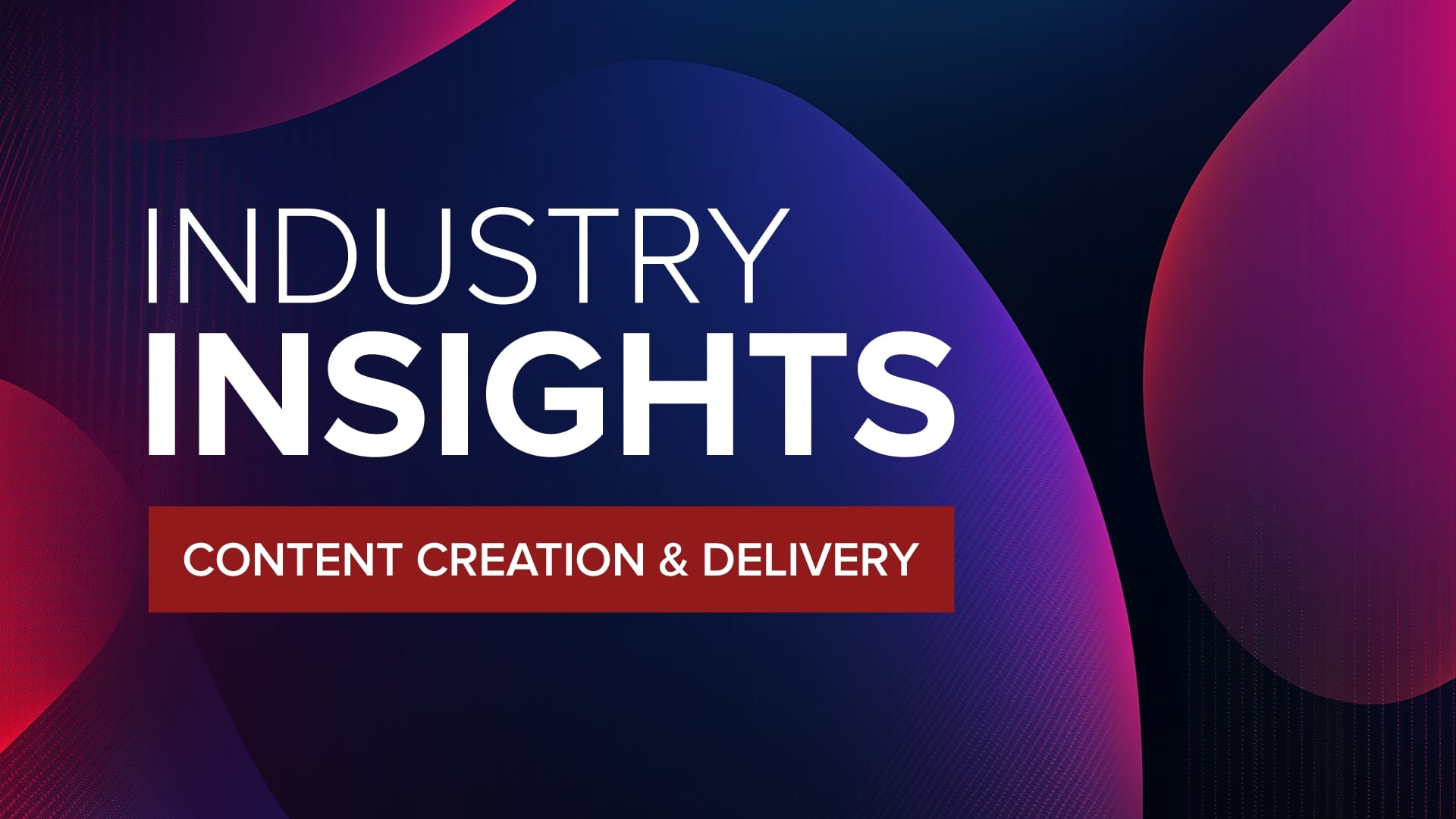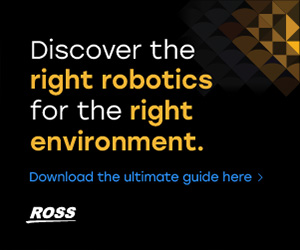Industry Insights: Navigating a fragmented content creation landscape

Subscribe to NCS for the latest news, project case studies and product announcements in broadcast technology, creative design and engineering delivered to your inbox.
The way we create, deliver and consume content is rapidly shifting, driven by advanced technologies and evolving audience behaviors.
In this first installment of a three-part Industry Insights roundtable series, we explore the dynamic interplay between availability, quality and innovation in the broadcast ecosystem.
From the democratization of high-quality production equipment to monetization and audience retention challenges, the conversation highlights how creators navigate a fragmented landscape.
This discussion dives into the opportunities offered by new platforms, the importance of balancing quality and speed, and AI’s possible transformative role. With insights from industry leaders, this roundtable sets the stage for understanding how broadcasters and independent creators alike can adapt and thrive.
Key takeaways from this Industry Insights roundtable
- Lower barriers to entry: Advanced tools and platforms have democratized content creation, enabling creators from diverse backgrounds to produce professional-quality content.
- Audiences demand speed and authenticity: Content creators must balance fast delivery with maintaining authenticity and quality to capture audience engagement in a competitive space.
- Evolving audience behavior: Short-form and interactive content formats are redefining how audiences engage with stories, emphasizing the need for adaptability.
- Tools enhance efficiency and creativity: Unified platforms, automation, and intuitive tools are critical for streamlining production while enabling high-quality output.
- AI as a co-pilot: AI is transforming workflows by handling repetitive tasks, enabling creators to focus on storytelling, but it cannot replace human creativity.
How has the role of content creators changed with the rise of new tools and platforms?
James Gilbert, VP, sales and marketing, Pixel Power: The barriers to entry have definitely lowered as the technology needed to produce content has become more accessible (i.e. cost effective) and it has become easier to push content out to global audiences and monetize it. This has obviously been great for consumer choice, and highly disruptive for the traditional broadcasters and platforms, but has made for a fragmented landscape where attitudes to quality have been eroded and audiences diluted. When it comes to content, the upside is that more people are doing it; the downside is also that more people are doing it!
Andy Rayner, CTO, Appear: With the evolution of media technology such as live processing, production delivery and distribution, combined with the flexibility of deployment choices such as public/private cloud and on-premise dedicated hardware solutions and commercial models such as subscription and SaaS, content creators have a great deal more freedom to focus on storytelling while ensuring seamless delivery across formats and devices.
Bob Caniglia, director of North America sales operations, Blackmagic Design: Thanks to the rise of innovative and accessible tools and platforms, content creators have become a pivotal part of the production and creation ecosystem. High-quality, professional equipment that was once exclusive to certain broadcasters is now available to content creators regardless of their locations or budgets. This democratization of technology has enabled creators to produce broadcast-level content, solidifying their status in the industry and allowing them to reach wider audiences with impactful stories and visuals.
Derek Barrilleaux, CEO, Projective: Content is a key aspect of corporate branding, so many companies now have internal creative agencies which are untethered from entrenched legacy “broadcast” processes and are thus more nimble and independent. With an independent creative project framework like Strawberry content creators can lay the foundation for them to produce efficiently and at scale.
Meghna Krishna, CRO, Magnifi: Content creation has been completely transformed by advanced tools and platforms. Remember the days when video logging and clipping felt like a never-ending chore? Now, thanks to automation, creators can skip the tedious stuff and focus on what matters—creating innovative and engaging content.
Kate Dimbleby, CEO, Stornaway: The democratization of content creation doesn’t diminish the value of high-quality craftsmanship, as some might suggest. Instead, it reflects a shift in audience behavior. Viewers are no longer passive; they engage with content actively, equipped with the power to comment, replicate, and expand upon the work of others.
Nav Khangura, VP, sales and business development, TMT Insights: The explosion of digital media over recent years has lowered the barrier to entry, enabling individuals from a wide range of backgrounds to participate in the digital space. This has been fueled by many different factors, from high quality cameras on our mobile devices, to low cost and readily available SaaS-style editing software that can run on any device, to more transparent monetization opportunities such as streaming platforms. You no longer need an army to create content; ultimately you need an idea that resonates with your target audience, the right technology to bring your ideas to life and a far-reaching platform, like social media platforms such as YouTube or TikTok, that can deliver your ideas across multiple screens directly to your audiences.
Ralf van Vegten, CMO, Zero Density: Content creators now have more opportunities than ever to bring their creative vision to life, enhance stories, increase operational efficiency and more with Virtual Production. With the launch of Unreal Motion Design, content created with Unreal for virtual production graphics can also be used as broadcast graphics, extending the content creator’s crucial role on enhancing storytelling with virtual production.
Jane Sung, COO, Cinedeck: As technology has advanced and new tools have become available that enable more efficient working, this has made production tasks easier to complete and allowed content creators to carry them out in less time. One example of how tools can save creators time is Cinedeck’s ConneX Hub, which allows content creators to save production and formatting fixes directly to finished master files in the cloud without have to upload a full file each time.
Chris Wilson, director of product marketing, MediaKind: Content creators have become mainstream influencers, directly challenging traditional broadcasters and larger streaming services for audience share. Tools like video editing software, AI-driven content enhancement and affordable production technologies have lowered the barriers to entry, enabling creators to produce professional-grade content without requiring large-scale resources. Thanks to platforms like YouTube, TikTok and Patreon, creators now have direct access to global audiences and can build loyal fan bases.
Sean Lee, CEO, OpenDrives: The role of content creator has gradually taken on the added responsibility of “content wrangler.” The number of creating tool options have rapidly increased in both number and type, which means content creators must now learn new skills to effectively use them to aggregate and manage (or “wrangle”) the data in line for an efficient content pipeline.
What are the most significant challenges content creators face today?
James Gilbert: Building a sustainable audience while monetizing content. There’s so much content available now – especially short-form – that it has become really hard for new entrants to make an impact and sustain audience growth. Part of this is also to do with consumption habits, as we’ve increasingly seen audiences ‘snacking’ on short-form content and deprioritizing traditional linear TV output. It makes for an interesting philosophical ‘chicken and egg’ question – does the kind of content available change viewing habits or do viewing habits influence the kind of content that gets made?
Bob Caniglia: Content creators today face the challenge of standing out in a crowded digital landscape. At Blackmagic Design, we aim to equip creators with affordable yet high-quality cinematic tools that allow them to produce stunning, professional-level content that captures viewers’ attention and sets creators apart from the competition. By leveraging this technology, creators of all budgets can afford to produce visually compelling content and compete in this industry.
Andy Hooper, SVP Live Products, Ateliere Creative Technologies: Visibility and reach. It’s a crowded market, and whether it’s home streamers looking to build a niche audience, or a broadcaster trying to commission scripted content, the fight for viewers is intense. For broadcasters to maintain viewing hours they need to find ways to leverage their local market knowledge and blend that with the best and most successful approaches in the online streaming world. There is a healthy future for those that succeed but a lot has to change in the way content is commissioned, created and delivered for that to become replicable.
Derek Barrilleaux: Eliminating waste and manual processes. Everyone is having to do more with less, yet post-production pipelines are riddled with manual processes and waiting periods.
Kate Dimbleby: It depends entirely on what medium they are working in. I think the biggest challenge is getting paid for what they do. And being valued. And being heard above the noise.
Ralf van Vegten: The talent gap is one of the biggest challenges many industries are facing today, and this also applies to content creation. To help address the gap, we launched the Open Studio License Program that allows more professionals to be trained using our software stack at no cost.
Benjamin Shirley, product manager, broadcast, MainConcept: One of the most significant challenges content creators face today is managing user expectation. It could take months, maybe years to produce a series that is binged by audiences within 3-4 days in some cases. Many have changed release cycles to a weekly cadence in an effort to stem binge viewing and ultimately churn, but this is only stretching the churn hopping behavior and not looking at the changes at source.
Jane Sung: There is a huge amount of pressure to produce content quickly and at the lowest cost possible, without sacrificing quality. Yes, this means working more efficiently, but it goes further than that. It also needs an innovative approach, which means thinking beyond conventional boundaries to create inventive and effective workflows.
Sean Lee: Data fragmentation has made it increasingly difficult for today’s content creators to produce quality content that looks great on all screens, know which platforms yield the widest viewer reach, and find pathways to consistent and scalable profitability. In addition, while content creation tools have gotten more powerful, capturing mindshare has become much more challenging.
Kathy Klingler, CMO, Brightcove: With the overwhelming growth of digital content across multiple platforms, the competition has never been more intense, demanding that creators produce vast amounts of engaging content to stand out. The constant pressure to create and distribute compelling content quickly, often at scale and across global markets, is compounded by ever-changing algorithms, making it difficult to know if they are reaching and engaging the right audiences. And while video remains one of the most powerful tools for audience engagement, measuring its true impact on business outcomes remains a significant challenge.
Which tools are essential for streamlining the production process in content creation?
Andy Rayner: Media processing platforms are essential, offering high-performance video compression and distribution capabilities. These tools reduce live production operational complexity while maintaining exceptional quality, enabling faster turnaround times and streamlined workflows.
Derek Barrilleaux: The most common words I’ve heard used to describe post-production are “Wild West.” This is because content and workspaces for projects can be anywhere. Establishing control and guardrails for those project workflows, regardless of the creative application, is essential to streamlining the production process.
Jan Weigner, CTO, Cinegy: Depending on the type of content or genre, content production can be streamlined by using templated production and automation. For large productions and formats that will be ongoing for years, proper media asset management with digital archive are paramount.
Robin Kirchhoffer, CMO, Dalet: A unified planning tool connected to a shared ecosystem for media and production asset management is crucial for efficient organization, collaboration, and access. Allowing storytellers and media managers to access the same content catalogues, archives, assets, video angles, and scripts, directly from the editor while collaborating with other creators using different editing solutions is a game changer. In addition, the editing tool needs to be output-agnostic to produce content for linear and non-linear digital channels on a single, intuitive user interface with easy-to-use tools.
Ralf van Vegten: Our new Unreal Motion Design-based real-time motion graphics platform, Lino, helps mitigate the issues content creators are facing by giving motion graphic designers a familiar and intuitive user face to make switching from existing applications easier while enhancing creativity and quality. Control interfaces are also essential after producing the content as they save time and reduce errors by integrating with newsroom systems, studio automation, and other data providers.
Jane Sung: For a streamlined production process, content needs to move seamlessly from capture to post-production and delivery, and for this to happen, tools need to be both effective and fully integrated into the workflow. Streamlining has got to start at ingest – if that process is done efficiently and assets are well prepared for post-production tasks, it saves a whole load of time later in the process.
Sean Lee: Although there is no one essential tool for streamlining the production process, there are specific tool qualities one should consider when choosing tools, especially flexibility and extensibility. Content creation workflows are unique to each user, even being considered part of an organization’s evolving competitive strategy; it’s important to find tools that can interoperate with others, integrate within your existing workflow and flex with your business needs so you can increase productivity and efficiency without out-of-control spending.
Kathy Klingler: We’re passionate about empowering everyone—from novices to experienced creators—to produce impactful video content without needing deep production expertise. Through our integrated video engagement platform, we’ve streamlined the content creation process with user-friendly tools for recording, editing, adding voiceovers or translations, and distributing content across digital channels. Built-in video analytics further help creators measure engagement and drive measurable impact.
How do you balance quality content with the demand for speed?
Andy Rayner: Appear achieves this balance through implemented technologies such as JPEG-XS, which maintains a high video quality performance with low latency, ideal for live and fast-paced productions. By optimizing workflows, broadcasters can deliver content promptly without sacrificing visual or audio quality ensuring a compelling and immersive viewing experience every time.
Bob Caniglia: Blackmagic Replay enhances live broadcasts by providing replays and converting them into promos, title sequences and instant social media updates, ensuring every critical moment is captured with precision without sacrificing quality. Sourcing innovative tools that make the editing process much faster than traditional software, like the cut page in DaVinci Resolve, ensures that fast turnaround times when editing a variety of long form and short form content can be met.
Jan Weigner: Depending on content type, speed is everything — especially for sports and news which are realtime or near-realtime content types. For other content types, it becomes more about resources, making automation of tasks as much as possible the ultimate goal.
Meghna Krishna: We believe that speed and quality don’t have to be mutually exclusive — automation is the key to achieving this balance. Content creation is made quicker and easier with our innovative features, such as automatic video rating, an integrated editing tool, and customizable video sizes. Automated solutions reduce manually tedious processes to mere minutes, ensuring precision and creativity remain intact.
Robin Kirchhoffer: Balancing quality content with the demand for speed involves leveraging advanced tools and streamlined workflows. Automation and AI play a crucial role by handling repetitive tasks such as asset tagging, version control, and content distribution, freeing up time for content creators to focus on more creative and value-added tasks. Additionally, when speed, quality, and adaptability are critical, adopting a story-centric approach supported by the right technology is no longer optional.
Kate Dimbleby: The age old question of why, who for and who cares? AI cannot replace these starting points for storytelling; they will drive the quality. Many platforms prioritize speed and quantity, but this approach will inevitably reach a saturation point.
Ralf van Vegten: Our end-to-end graphics ecosystem allows our users to create their content easier and faster while increasing the quality of the graphics and simplifying operations. For example, our new real-time motion graphics platform, Lino, allows all production assets to be created in Unreal to be used in various applications like video wall content, on-air graphics, pre-production graphics and virtual production graphics. This approach not only enhances rendering and compositing quality but also significantly cuts down implementation and production costs and redundancy.
Jane Sung: Quality and speed are both equally important in content creation — and they don’t need to be mutually exclusive. A lot of tools are now available such as Cinedeck’s ingest solutions, and its Connex and Cloudflow Hub, that help content creators work smarter, so they can save time without compromising quality
Sean Lee: Quality expectations vary depending on content type, but regardless today’s consumers expect speedy delivery and instant gratification. For example, news segments will have higher sound quality expectations versus picture quality while live sports broadcasting have high picture, sound, and delivery speed standards. You can improve content quality by leveraging modern workflow technologies like REMI and cloud that can easily integrate into your existing workflow and can help with the mechanics of productivity so you can spend less time on technology and more time on creativity.
What role does AI play in enhancing or disrupting traditional content creation processes?
James Gilbert: While there has been a bit of scaremongering in the industry about Generative AI’s ability to produce creative output, I think we’re quite skeptical of the value of that approach, especially in the short-term. Quality of output and audience acceptance will always be the key metrics when considering AI-generated content, and I don’t feel there is currently great appetite for this. More interesting, I suspect, is the ‘co-pilot’ approach where AI does the heavy-lifting and human oversight ensures the quality of the end result.
Bob Caniglia: Assistive AI tools in media production play a complementary and transformative role in enhancing content creation by streamlining workflows and eliminating time-consuming tasks. In post production, for example, this includes tools such as automatic transcription, classification and organization which accelerate the editing and post process, allowing more time to be spent on the creative. By integrating AI into the production workflow, creators can enhance productivity, refine content quality, and reduce turn-around times, ultimately leading to a more efficient and inventive media production process.
Derek Barrilleaux: The promise of AI is to increase efficiency by eliminating unnecessary and repetitive manual tasks. Meanwhile, as already mentioned, post-production is riddled with manual processes and tasks that AI won’t address. Furthermore, to deploy it effectively in a practical context requires coherence: You can’t train AI on a content that is spread across hundreds of different storage pools, hard drives, and servers. Thus, to derive real value from AI, content creators need to first establish a coherent structure for their content creation.
Jan Weigner: An ever increasing one, from automatic transcription, summarization, cataloguing, translation, and captioning to metadata enhancement. We haven’t even started to touch on generative AI tools, from harmless background music creation to text-to-speech narration and full-on video shot creation replacing human actors.
Meghna Krishna: By automating tedious tasks like video logging and editing, AI frees creators to focus on storytelling and building audience connections. It doesn’t stop at saving time — AI enhances creativity. Tools like gen-AI assets and automated clip rating ensure high-quality, personalized content that resonates with audiences.
Nav Khangura: AI and machine learning play an important role in driving numerous efficiencies in the traditional content creation process. Whilst creative AI is still very much in its infancy, repetitive AI tools such as object and facial recognition, mood and genre identification and speech to text models have helped content creators drive more automation. This enables huge time and cost efficiencies, but also within the generative AI space where content creators are using AI tools to supplement ideation, to avoid reshoots and to automate editing and visual effects processes.
Ralf van Vegten: AI offers an unparalleled opportunity to create content easily and more efficiently and therefore, make it more accessible. To allow broadcasters to utilize AI’s strong features, our real-time operating system, NODOS lays the foundation for using AI tools with a dedicated subsystem in Reality5. This advanced AI technology is set to showcase features such as live depth mask generation from 2D video, AI style transfer, and AI-powered superresolution, allowing broadcasters to go beyond the limitations and customize their contents with their creative visions.
Benjamin Shirley: Everyone is looking at AI for content quality solutions like it’s a golden egg, but this is not the case, at least not yet. The issue in at least some cases is that AI can’t beat current encoders, while in other cases, the money and effort for a fraction of a VMAF score is just not worth it if your audience will not notice the gain in quality. The best use of AI would be to aid in enrichment workflows, adding metadata that brings value to the end customer or data that makes clip sales simpler, improves SEO, app level search, and music analysis, for example.
Jane Sung: AI is transforming content creation workflows in lots of ways. One area that it is already making a difference is in localization and also with transcriptions and captioning. These tasks take up a lot of time but with AI, they can be largely automated which means content gets to the audience quicker.
Chris Wilson: Tools like natural language processing (NLP) systems improve consistency by analyzing tone, style, and grammar, ensuring a cohesive voice across content. Moreover, generative AI technologies can transform abstract ideas into concrete outputs by producing voice mockups, summaries or sample videos, enabling creators to iterate and refine their concepts. However, while AI can efficiently manipulate and repurpose content, it cannot authentically create without human creativity—there always needs to be a “creator” in the loop to preserve the soul of the content.
Sean Lee: In its current state, AI’s reputation for being an essential tool for content production is the product of media hype and “shiny toy” syndrome. Visionaries and early adopters are excited by the new technology and applying it to all sorts of problems looking for workflow breakthroughs, but this process will take time, maybe even several years as AI algorithms become more and more refined. In the present, AI’s productivity efficiencies are incremental and still require human intervention when used for subtitle creation, sound editing, image and picture manipulation.
Kathy Klingler: AI is increasingly transforming traditional content creation by automating and enhancing various aspects of the process, from idea generation to distribution. As AI improves, it will enable creators to produce high-quality content more efficiently, reducing time and costs while improving audience engagement and maximizing revenue potential. We have begun to deploy AI capabilities focused on content creation to amplify the impact of each piece of content to reach and engage audiences with greater speed and efficiency. The capabilities also streamline workflows and enable more creative possibilities while disrupting traditional content production methods, making video creation accessible to creators of all sizes.
How can broadcasters leverage user-generated content to deepen audience engagement?
Andy Rayner: By incorporating UGC into their storytelling, broadcasters can create a more interactive and authentic connection with audiences. Appear’s platforms enable seamless integration and distribution of UGC, ensuring it meets professional-quality standards.
Andy Hooper: Collaborative remote co-productions with influential viewers and users is becoming increasingly possible with the latest production technologies. This kind of co-creation will become increasingly common as broadcasters and streamers start to make content and production increasingly relevant for smaller and smaller audience segments.
What tools or platforms have changed storytelling? For the good or bad?
James Gilbert: The smartphone is the most obvious answer here; it has given everyone the ability to shoot and upload/share content, as well as giving us all instant access to news, comment and opinions from all around the world. While some areas (e.g. newsgathering) have benefited greatly from this development, it has also served to remind us of the pitfalls of content democratization – platforms may choose to provide equal exposure to all opinions, but this does not mean we should consider all opinions to be equally valid.
Kate Dimbleby: Social media and gaming have profoundly transformed storytelling. We now expect interactive experiences and digestible, bite-sized content at the click of a button. This shift has not only empowered audiences but also shortened attention spans and raised expectations for more engaging, immersive content.
Ralf van Vegten: Our real-time virtual production platform, Reality, brought a new paradigm to visual storytelling with dynamic visuals, data-driven graphics, and seamless workflow integration. Reality enables creators to produce hyper photorealistic real-time graphics for Virtual Studio, Augmented Reality and Extended Reality productions with over 3 million hours of flawlessly-produced content under its belt. Reality’s integration with current technology and editorial systems also helps broadcasters, minimizing disruptions and boosting efficiency.
Jane Sung: Storytelling formats naturally evolve over time as new technology comes to the fore, and viewers engage with content in different ways. Social media platforms have led to new storytelling formats such as reels and short form content, which resonate closely with younger generations. However, algorithms often prioritize trends over originality, which can make it more difficult for original content creators to reach wide audiences.
Sean Lee: Content distribution platforms have changed the way consumers watch content, e.g, social media has led to vertical formats and shorter clips being more accepted, even preferred. Online video platforms like YouTube and Netflix have forced content creators to pump content out faster and in shorter bursts rather than the traditional multi-episode seasons. Even the kind of content has changed due to viewers’ increased demands for instant content, all driven by metrics and algorithms “flattening” the market according to collected data.
Edouard Griveaud, senior product manager, Vizrt: Online fast video editing and publishing platforms dedicated to short-form, easily snackable content, have completely changed the storytelling structure. It has unleashed a new form of creativity, with a different rhythm and graphics. This format has become the main factor in attracting an audience, and storytelling has adapted to a faster-paced delivery, enhanced with graphics.
Subscribe to NCS for the latest news, project case studies and product announcements in broadcast technology, creative design and engineering delivered to your inbox.







tags
Andy Hooper, Andy Rayner, Appear, Ateliere, Ateliere Creative Technologies, Benjamin Shirley, Blackmagic Design, Bob Caniglia, Brightcove, Chris Wilson, Cinedeck, Cinegy, Dalet, Derek Barrilleaux, Edouard Griveaud, James Gilbert, Jan Weigner, Jane Sung, Kate Dimbleby, Kathy Klingler, Magnifi, Magnifi AI, MainConcept, MediaKind, Meghna Krishna, Nav Khangura, OpenDrives, Pixel Power, Projective Technology, Ralf van Vegten, Robin Kirchhoffer, Sean Lee, Stornaway, TMT Insights, Vizrt, Zero Density
categories
Broadcast Automation, Content, Heroes, Industry Insights, Online and Digital Production, Social Media, Social Media Video Platforms, Streaming, Voices